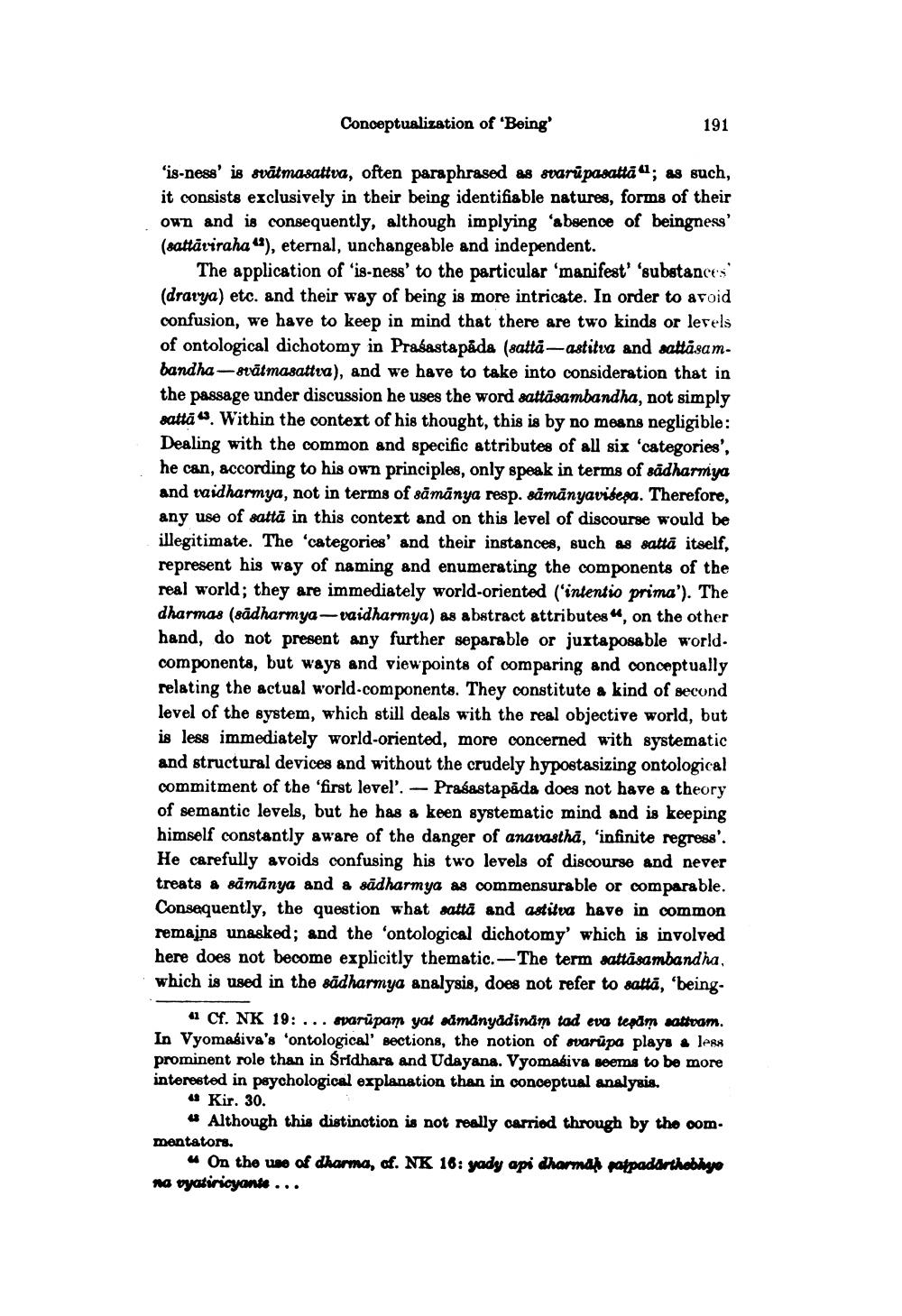________________
Conceptualization of 'Being'
191
‘is-ness' is svātmasattva, often paraphrased as svarūpasattā 4; as such, it consists exclusively in their being identifiable natures, forms of their oun and is consequently, although implying 'absence of beingness' (sattaviraha"), eternal, unchangeable and independent.
The application of ‘is-ness' to the particular 'manifest' 'substances' (drarya) etc. and their way of being is more intricate. In order to avoid confusion, we have to keep in mind that there are two kinds or levels of ontological dichotomy in Prasastapäda (satta --astitva and sattasambandha - Svätmasattva), and we have to take into consideration that in the passage under discussion he uses the word sattasambandha, not simply satta“. Within the context of his thought, this is by no means negligible: Dealing with the common and specific attributes of all six "categories', he can, according to his own principles, only speak in terms of sadharmya and vaidharmya, not in terms of sámánya resp. sämänyavisepa. Therefore, any use of sattă in this context and on this level of discourse would be illegitimate. The 'categories' and their instances, such as sattā itself, represent his way of naming and enumerating the components of the real world; they are immediately world-oriented ('intentio prima'). The dharmas (sādharmya -vaidharmya) as abstract attributes“, on the other hand, do not present any further separable or juxtaposable world. components, but ways and viewpoints of comparing and conceptually relating the actual world.components. They constitute a kind of second level of the system, which still deals with the real objective world, but is less immediately world-oriented, more concerned with systematic and structural devices and without the crudely hypostasizing ontological commitment of the 'first level'. - Prasastapāda does not have a theory of semantic levels, but he has a keen systematic mind and is keeping himself constantly aware of the danger of anavastha, 'infinite regress'. He carefully avoids confusing his two levels of discourse and never treats a sämänya and & sādharmya as commensurable or comparable. Consequently, the question what satta and astitva have in common remains unasked; and the 'ontological dichotomy' which is involved here does not become explicitly thematic.— The term sattasambandha, which is used in the sādharmya analysis, does not refer to satta, 'being.
a Cf. NK 19: ... sparūpam yot admdnyadinam tad eva tepdm sattvam. In Vyomaćiva's 'ontological' sections, the notion of sarūpa plays « less prominent role than in Sridhara and Udayana. Vyomasiva seems to be more interested in psychological explanation than in conceptual analysis.
4 Kir. 30.
# Although this distinction is not really carried through by tho oom. mentators.
u On the use of dharma, of. NK 16: yady api dharmdil pappadarthobhyo na vyatiricyante...




